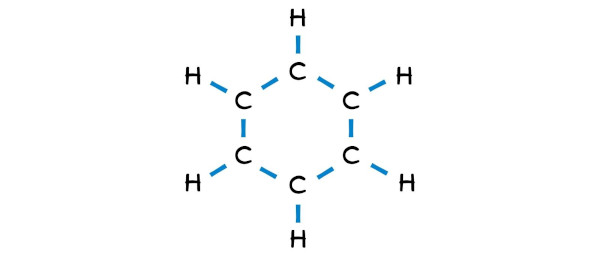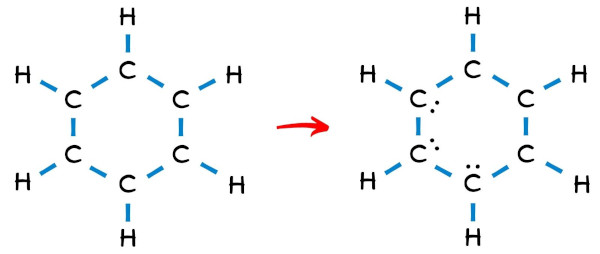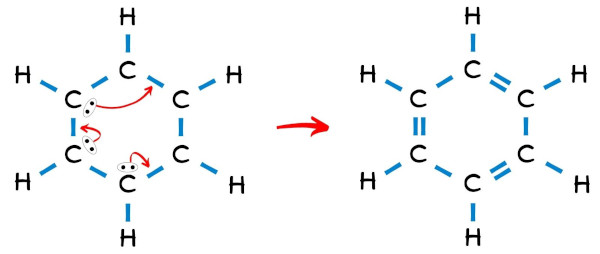
I’m super excited to teach you the lewis structure of C6H6 (benzene) in just 4 simple steps.
Infact, I’ve also given the step-by-step images for drawing the lewis dot structure of C6H6 molecule.
So, if you are ready to go with these 4 simple steps, then let’s dive right into it!
Lewis structure of C6H6 (Benzene) contains a ring of six Carbon atoms (C) and each Carbon atom (C) has one Hydrogen atom (H) attached to it. The ring structure of Carbon has alternating double bonds.
Let’s draw and understand this lewis dot structure in simple steps.
(Note: Take a pen and paper with you and try to draw this lewis structure along with me. I am sure you will definitely learn how to draw lewis structure of C6H6).
4 Steps to Draw the Lewis Structure of C6H6 (Benzene)
Step #1: Calculate the total number of valence electrons
Here, the given molecule is C6H6 (benzene). In order to draw the lewis structure of C6H6, first of all you have to find the total number of valence electrons present in the C6H6 molecule.
(Valence electrons are the number of electrons present in the outermost shell of an atom).
So, let’s calculate this first.
- For Carbon:

Carbon is a group 14 element on the periodic table. [1]
Hence, the valence electrons present in carbon is 4 (see below image).

- For Hydrogen:

Hydrogen is a group 1 element on the periodic table. [2]
Hence, the valence electron present in hydrogen is 1 (see below image).

Hence in a C6H6 molecule,
Valence electrons given by each Carbon (C) atom = 4
Valence electron given by each Hydrogen (H) atom = 1
So, total number of Valence electrons in C6H6 = 4(6) + 1(6) = 30
Step #2: Make the rough sketch
The C6H6 molecule has 6 carbon atoms arranged in a circular manner.
All these 6 carbon atoms have one hydrogen atom attached to it.
So let’s draw this simple ring of 6 carbons with hydrogen attached to each carbon atom.

The above sketch contains 12 single bonds, that means we have used 24 valence electrons out of the total 30 valence electrons.
Step #3: Put the remaining electrons on the central atoms
The C6H6 molecule has a total of 30 valence electrons and out of this only 24 valence electrons are used.
So the number of electrons left to be kept on the central atom = 30 – 24 = 6.
So let’s keep these six electrons (i.e 3 electron pairs) on the carbon atoms.

Step #4: Make all the atoms stable
In the lewis structure of C6H6 (benzene), the outer atoms are hydrogen atoms. These hydrogen atoms form a duplet and hence they are stable.
Now if we see the carbon atoms, then 3 carbon atoms are forming an octet, but the remaining 3 carbon atoms are not forming an octet. Hence these remaining 3 carbon atoms are unstable.
To make them stable, we have to shift the electron pairs to form a double bond.

In the above structure, you have to shift the electrons so that the central carbon ring can have alternating double bonds.
By doing this, all the carbon atoms will form a stable octet.
For more practice and better understanding, you can try other lewis structures listed below.
Related lewis structures for your practice:
Lewis Structure of NBr3
Lewis Structure of SeF4
Lewis Structure of H3PO4
Lewis Structure of H2Se
Lewis Structure of SOCl2
Article by;
Jay is an educator and has helped more than 100,000 students in their studies by providing simple and easy explanations on different science-related topics. With a desire to make learning accessible for everyone, he founded Knords Learning, an online learning platform that provides students with easily understandable explanations.
Read more about our Editorial process.
